It is possible to have bare spots on an otherwise lush and healthy lawn due to pet urine, heavy foot activity, infestations by grubs and other lawn pests, or any of a number of other potential factors such as chemical burns. However, looking out the window at a patchwork eyesore of a lawn is not the best sensation if you take pride in your property. You also probably won’t feel much better if you think about how much time and work it would take to fix your own. In this article, let’s find out will grass spread to bare spots.
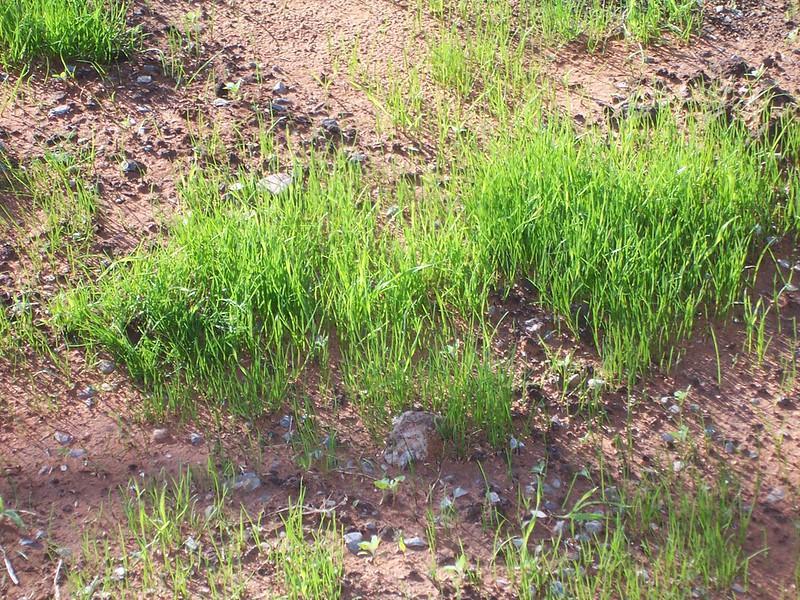
Bare spots in a lawn can result from disease, heavy foot traffic, drought, and weed or insect infestation.
There is a possibility that the grass that you have in your yard will eventually be able to fill in the bare spots on its own. However, you will still need to investigate the root cause of bare spots in your yard and make necessary adjustments. For instance, if bare patches develop in an area because of heavy foot traffic, there is no way that you will be able to repair it permanently unless you also address the traffic problem in your yard.
Nevertheless, if the type of grass on your lawn contains runners, the bare spots in your yard should be filled in by the grass itself over time. Runners are a way by which certain grasses spread, continue to grow, and fill in bare spots in an area. The same can be said for grasses that propagate using rhizomes (below-ground runners). The only thing you need is patience while you work to prevent further damage to that region.
On the other hand, if the grass you have on your lawn is a bunch-type grass, you will have to get your hands dirty to fill up bare patches with compost and grass seed.
Keep reading to learn more!
Will My Grass Spread To Bare Spots?
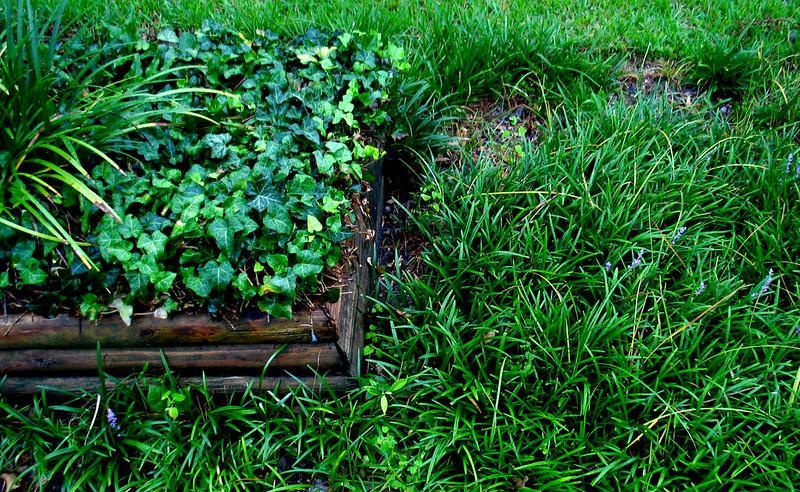
Bermuda grass is well-known for its fast-spreading abilities & it is a great option for filling in bare spots.
That is something that is dependent on the kind of grass that you have in your yard. For instance, if your lawn is made-up of grass with a bunch-like growth habit, it will never fill in the bare spots on its own. Therefore, you will have to reseed or overseed the bare spots on your lawn to fix the patchy turf issue.
On the other hand, if your lawn is made up of Kentucky bluegrass or Bermuda grass, you might be in luck. These grasses have rhizomes that are stems that develop and expand below-ground along with runners, which are vine-like stems that grow and expand above-ground. Runners and rhizomes generate new plants from the mother plant and can also move into empty spaces and fill them in on their own.
If you are unsure which type of grass you have on your lawn, you can verify this information with a lawn care service, garden center, or local extension office. When you visit them, all you have to do is show them a photograph of your grass or dig up a small sample of it, and they should be able to identify the grasses that are growing in your yard quickly.
However, for your ease, below is a quick lawn grass identification table as well.
RELATED: What Is The Best Mowing Season, Height & Frequency For Bermuda Grass?
How Do I Identify My Grass?
Just like most of the plant life on earth, each grass has its own ideal growing conditions. Your grass must be adapted to the climate of the area where it grows for it to endure the changing seasons. Therefore, the first piece of information you need when trying to determine the type of grass you have is your geographic location.
Commonly Used Lawn Grasses In The South
The grasses most commonly used for lawns in the south are listed in the table below. The southern half of the United States is home to warm-season grasses such as St. Augustine grass and centipede grass. These grasses reach their peak growth during the summer. While, during the winter, these grasses enter dormancy.
| Grass | Growth style | Width of blade | Vernation | Shape of tip | Color |
| Zoysia grass | Stolons/rhizomes | Tapered to slightly tapered | Folded | Sharp point | Light to medium green |
| Centipede grass | Stolons | Medium | Folded | Concave/sharp point | Light green |
| Bermuda grass | Stolons/rhizomes | Tapered | Folded | Sharp point | Dark green |
| Bahia grass | Stolons/rhizomes | Medium to wide | Folded/rolled | Sharp point | Light green |
Commonly Used Lawn Grasses In The North
Cool-season grasses make up the vast majority of lawn grasses found in the northern half of the United States. The term “cool-season” refers to their periods of maximum growth, which is in spring and fall. Cool-season grasses will do well in the milder climates of the north but will wither and die in the hotter regions of the south.
| Grass | Growth style | Width of blade | Vernation | Shape of tip | Color |
| Turf-type tall fescue | Bunching | Slightly tapered | Rolled | Sharp point | Medium to dark green |
| Traditional tall fescue | Bunching | Slightly tapered | Rolled | Sharp point | Light green |
| Perennial ryegrass | Bunching | Slightly tapered | Folded | Sharp point | Medium to dark green |
| Kentucky bluegrass | Spreading, rhizomes | Slightly tapered | Folded | Concave | Dark blueish green |
| Fine fescue | Either bunching or rhizomes | Tapered | Folded | Sharp point | Medium to dark green |
*The positioning of tender leaves in a leaf bud before opening is known as vernation.
RELATED: What Are Different Bermuda Grass Types, And Which Is Best For A Lawn?
How Does Grass Spread?
How grass spreads depends on the particular kind of grass you are working with. Some types of grass grow laterally and will automatically fill any empty lawn spaces. These are either Stolon grasses or Rhizome grasses.
While other kinds of grass tend to form clumps and expand in a vertical rather than a horizontal direction, these kinds of grass will not propagate themselves and fill in the empty spaces on their own. So let’s get a little bit more information on this topic!
Stolons (Runners)

Stolons are root systems that spread above ground.
Since stolons are hardy and can outcompete other varieties of grass in a lawn, it is important to consider the existing turfgrass in your yard before introducing stolon grass. Stolons are lateral stems that develop horizontally and grow on top of the ground. Therefore, they can move quite a distance away from the mother plant.
Once the root node of a stolon makes contact with soil, it will begin to take root, resulting in the formation of an independent grass plant. St. Augustine grass and Zoysia grass are two examples of grasses that belong to the Stolon family.
Rhizomes
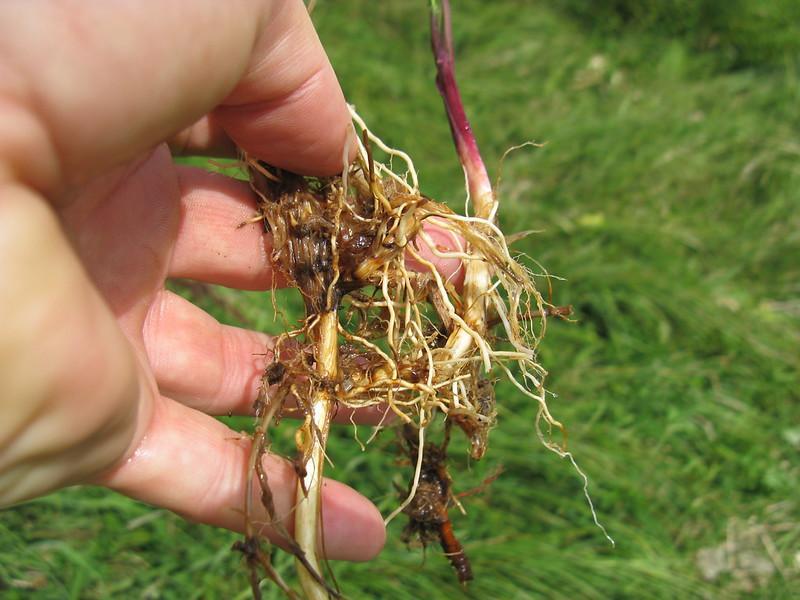
Rhizomes strike new roots downward into the soil and also shoot stems upwards.
Rhizomes are types of stems that develop underground and eventually emerge at a location that is some distance away from the plant that they originated from. Rhizome grasses are virtually capable of propagating themselves independently due to the fact that their stems give rise to an entirely new plant at each node, which then produces its own rhizomes. However, the genetic make-up of the new plants is identical to that of the parent plant.
One of the main benefits of growing horizontally is that it prevents the grass from losing its leaves. Rhizome grasses typically grow rapidly and are considered invasive species in some places. Examples of rhizomatous grasses are Kentucky bluegrass and fine fescue.
Rhizomes & Stolons
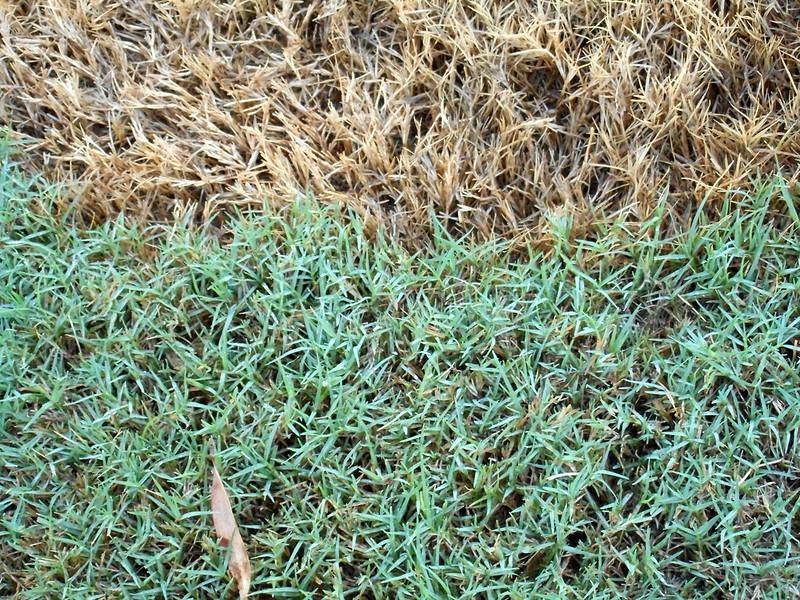
Bermuda grass spreads via both stolons and rhizomes.
Some types of grasses propagate by rhizomes and stolons simultaneously. Unfortunately, these grass types usually tend to be aggressive, and not only will they grow into vacant places, but they will also grow over other types of plants.
Examples of such grass types include Bermuda grass and Zoysia grass.
Bunch Grass
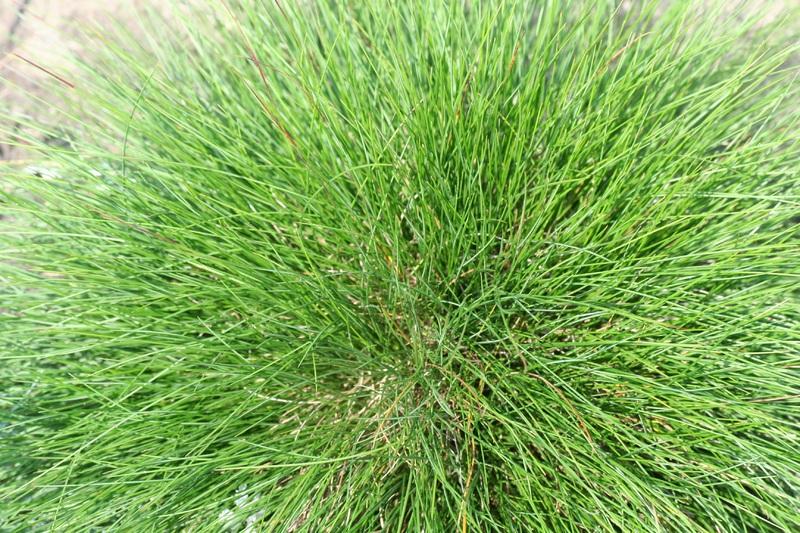
Fescues are a bunch-type grass and are very slow to fill in spaces between plants.
Bunch-type grasses are named after their bunchy appearance, created by forming several tillers from the plant’s top. The only way that these grasses can grow is via producing tillers. The tillers of grass are its tall, upright stems. The portions of the grass that are cut during mowing are known as tillers.
It takes longer for grass to spread when it grows vertically rather than horizontally. Tillers are produced by a plant’s crown, the intersection of the plant’s root and shoot systems. Common examples of bunch-type grasses are fescues and ryegrass.
Reasons Why Your Grass Won’t Spread
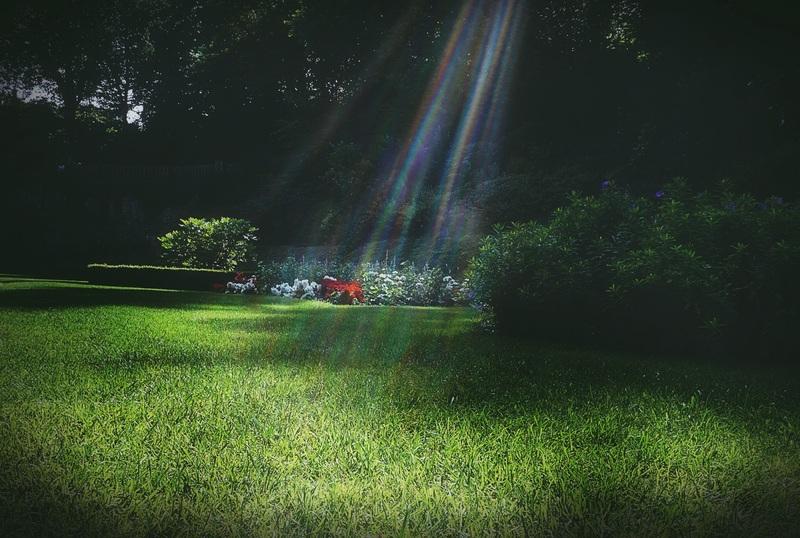
Filtered sunlight might be why bare spots in your yard exist.
There are a few different causes that could be preventing your grass from growing or spreading. The following are the most significant:
- The lawn needs dethatching.
- The grass is receiving an excessive amount of water.
- Grass does not have an adequate supply of water.
- Grass requires fertilization.
- This particular type of grass is a bunch-type grass.
- When you mow, you remove more than one-third of the grass blade.
- Your grass is not receiving enough sun.
- The soil in your lawn is overly compacted.
How To Make Your Grass Spread?
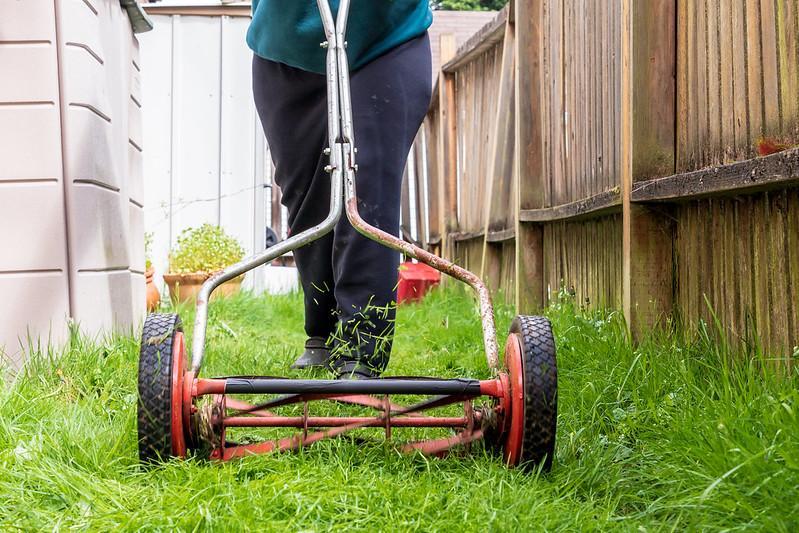
Mowing your lawn at the right height can also help the grass spread.
Planting grass seeds appropriate for your region and adhering to a proper lawn maintenance routine are the two most effective ways to get your grass to spread fast. However, if this does not seem to solve your issue, you can try these things:
Get Your Lawn Soil Tested
Get a soil test for each bare spot on your lawn that you are attempting to fill with grass. This will tell you which nutrients and minerals are already present in your lawn soil and what additional nutrients need to be added for grass growth.
Mow Your Lawn
Cutting the grass will promote its spread. Usually, the type of grass you have will determine how quickly it spreads. For example, some grasses quickly spread by putting runners while others are a bit slow. Mowing will also help in the control of grass weeds.
Fertilize Your Lawn
Fertilize newly established lawns from seeds about 4-6 weeks following germination. At the same time, new lawns established from sod, plugs, or sprigs should be fertilized six weeks after planting. However, remember that excessive fertilizing might result in grass burns, which can also leave bare spots on your lawn.
Water Your Lawn Correctly
When the new grass is being established, water it frequently. Then, as the grass begins to lay down roots, switch to deep watering once a week to encourage the roots to grow as deeply as possible. This makes the grass more resistant to the effects of drought. In either scenario, the grass should receive an inch and a half of water weekly.
How To Fix Bare Spots On Your Lawn?

Overseeding bare spots in your yard is the easiest way to get rid of them.
Using grass seed is a simple and economical way to fill in bare spots on your lawn. It won’t take more than twenty minutes of your time, and you’ll need to perform basic maintenance up until the first or second mowing. However, this method is quite slow.
On the other hand, filling the bare place with a piece cut from a roll of grass sod is faster than seeding. This is an effective way of treating several bare spots. You may cut multiple patches from a single roll of sod which often costs less than ten dollars.
Final Thoughts
Will grass grow in those bare patches? As I’ve explained here – it depends. The answer is most likely yes if you are lucky enough to have a grass that spreads through stolons and rhizomes. If, on the other hand, you have the sort of grass that grows in bunches such as ryegrass or fescue grass, then the answer is probably no.
However, even if you have grass that spreads by stolons and rhizomes, it is still a good idea to reseed bare patches on your lawn. This is because bare spots are more susceptible to weed infestations which will ruin your lawn.
Frequently Asked Questions
Can grass spread on its own?
It depends. Grass with rhizomes and stolons can expand laterally and naturally fill up bare areas on your lawn. On the other hand, bunch-type grasses spread slowly and, in most cases, do not fill in the empty places on their own when planted on a lawn.
How long does it take for grass to spread?
You’ll need to be patient if you want to create a lush green blanket of grass. Grass seed germinates at varied rates based on factors such as grass type, weather, time of year, and soil moisture. Nevertheless, grass seed usually takes 10 to 14 days to grow, but occasionally it can also take up to 30 days.
Will dad patches of grass grow back?
Whether or not a dead lawn can be revived depends on how long the grass has been lying dead. However, after the grass has died, it is extremely difficult, if not impossible, to get it to grow back, no matter how much water and fertilizer you use.
How does bunch grass spread?
In contrast to grasses that form sod and grow from underground networks of roots known as rhizomes, bunch grass grows as bunches of multiple growth tips packed closely together. These points are where the stems of individual leaves and flowers begin to form.
How does new grass grow?
As soon as the grass seeds germinate, the small leaves utilize sunlight to create energy that allows them to develop thick, deep roots. As a result, the growth of grass plants is rapid and full when there is adequate light. However, the lawn will grow sparsely when there is shade.
Sources For Further Reading
Repairing bare spots in your lawn – University of Kentucky Extension Service
Bare spots in the lawn left behind by summer annuals – Purdue University Extension Service
Get the most out of lawn patches and repair mixes this spring – University of Minnesota Extension Service
Editor’s Recommendations
How To Overseed A Lawn Without Aerating? A Comprehensive Guide
Grasses That Can Be Planted And Grown In Fall & Winter | Our Top Picks
Bermuda Grass Vs. Fescue Grass | What’s The Difference & Which Is Best?







